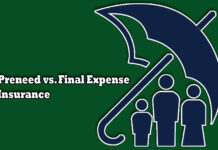Force-placed insurance, also known as lender-placed insurance, is a type of property insurance that a lender or mortgage servicer purchases on behalf of a borrower. This happens when the borrower fails to maintain adequate insurance coverage on a property.

Furthermore, this insurance is meant to protect the lender’s financial interest in the property in case of damage or loss.
While this insurance serves a critical function for lenders, it is often more expensive and provides less coverage than standard homeowner’s insurance policies. However, this makes it a really costly option for borrowers.
Understanding how this insurance works is crucial for homeowners to avoid unexpected financial burdens. Borrowers are required to maintain adequate insurance on their mortgaged property as a condition of their loan agreement.
How Force-Placed Insurance Works
Force-placed insurance comes into play when a homeowner fails to provide proof of a valid insurance policy. Lenders monitor the borrower’s compliance with insurance requirements and notify homeowners if coverage lapses.
If the borrower fails to respond or reinstate their policy, the lender will purchase this insurance and add the cost to the borrower’s mortgage payments.
How It Works
- Insurance Lapse Detection: Lenders track homeowners’ insurance policies and identify when coverage lapses.
- Notification to Borrower: The borrower is given a warning to reinstate or provide proof of coverage.
- Policy Placement: If the borrower does not act, the lender purchases a force-placed insurance policy.
- Cost Addition to Mortgage: The cost of the policy is then added to the borrower’s mortgage bill.
Why Lenders Use Force-Placed Insurance
Lenders make use of this insurance model as a risk management tool to protect their financial interest in a property. When a property is mortgaged, the lender technically owns a portion of the home until the loan is fully repaid.
Without proper insurance coverage, a damaged or destroyed home could result in significant financial loss for the lender.
Reasons For This Insurance Model
Here are some of the reasons why the force-placed insurance model is crucial:
- Protection against Property Loss: It ensures the property remains insured even if the borrower fails to secure coverage.
- Loan Agreement Compliance: Borrowers are obligated by contract to maintain insurance as part of their mortgage agreement.
- Financial Risk Mitigation: Lenders avoid losses that could result from uninsured damage to the property.
- Regulatory Compliance: Some regulations require lenders to ensure that mortgaged properties are adequately insured.
Costs And Coverage
Force-placed insurance is generally much more expensive than standard homeowners’ insurance, and it often provides less coverage. This can create a financial burden for borrowers who are already struggling with their mortgage payments.
Here is some of what the coverage entails:
- Higher Premiums: Force-placed insurance policies can cost up to three times more than a regular homeowners’ policy.
- Limited Coverage: It often covers only the structure of the home, not personal belongings or liability protection.
- No Customization: Unlike regular policies, borrowers do not have control over coverage terms.
- Non-Competitive Rates: Lenders choose insurers that may charge higher premiums compared to market rates.
How To Avoid Force-Placed Insurance
Borrowers can take steps to prevent this insurance by ensuring they maintain proper insurance coverage. Here are some of the ways to avoid this insurance model:
- Maintain Active Homeowners Insurance: Keep your policy up to date and ensure payments are made on time.
- Shop for Competitive Insurance Rates: Ensure you have an affordable and comprehensive homeowners’ policy that meets lender requirements.
- Communicate with Your Lender: If you experience financial difficulties, inform your lender to explore potential solutions before insurance lapses.
- Provide Proof of Coverage Promptly: If your lender requests proof of insurance, submit the necessary documentation without delay.
- Set Up Automatic Payments: Avoid unintentional lapses by setting up auto-pay for your insurance premiums.
Frequently Asked Questions
Can I Remove Force-Placed Insurance From My Mortgage?
Yes, you can remove this insurance by providing proof of an active homeowners’ insurance policy that meets your lender’s requirements. Once it is verified, the lender will cancel the force-placed policy.
Why Is Force-Placed Insurance More Expensive?
Force-placed insurance is more expensive because lenders purchase policies in bulk and do not shop for the most competitive rates. Additionally, the policies often provide less coverage, making them less beneficial to borrowers.
Does Force-Placed Insurance Cover Personal Belongings?
No, this insurance usually only covers the structure of the home. It does not include personal property, liability protection, or loss-of-use coverage.



